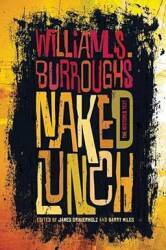
Lower East Side: Rivington Street
Rivington Street across the Lower East Side
Rivington Street runs roughly east-west across the Lower East Side in Manhattan. Rivington is one block north of Delancey Street. The parallel street one block further north is Stanton Street. Let's walk the full length of Rivington Street, from one end to another.
The main grid of Manhattan streets from 1st Street and on north follows the Commissioners' Plan of 1811, which aligns the streets and avenues to a grid rotated 29° clockwise from the true cardinal directions. The streets of the Lower East Side, south of Houston Street, are not aligned to the main grid and are about 7° closer to N-S/E-W. See the map above where 1st and 2nd Streets angle off the north edge, and the thin black lines show the true N-S/E-W grid. However, the Lower East Side streets are still rotated by about 22° so that nominal east-west streets like Rivington run approximately 112°—292°.
Being south of Houston, which is pronounced like HOW-stun and not HUE-stun like the city in Texas, this area could be referred to as SoHo, short for "South of Houston". However, this area south of Houston and east of Bowery is generally called the Lower East Side. SoHo refers to the area to its west, around Broadway and on to the west.
Vehicle traffic on Rivington runs one-way from east to west. The west end is at a T-intersection with Bowery, the east end terminates thirteen blocks away at the Samuel Gompers Houses on the east side of Pitt Street. Traffic is interrupted by the block where Sara Delano Roosevelt Park runs north to south.
That's just for you to watch out for the traffic as you are walking. You won't be driving. Who wants to drive in Manhattan?
Walking West to East
We will start our walking tour at the west end and travel against the vehicular traffic. Just up Bowery from Rivington's west end, on the east side of Bowery, is the Bowery Mission. Just beyond that is the New Museum. This area is undergoing a long and significant transformation.
Looking northwest across Bowery we see a former YMCA building directly across from the Bowery Mission. William S. Burroughs maintained an apartment in this building at 222 Bowery from 1974 until 1981. His windowless apartment, a former locker room, was known as "The Bunker" The Bunker is directly across Bowery from the Bowery Mission.
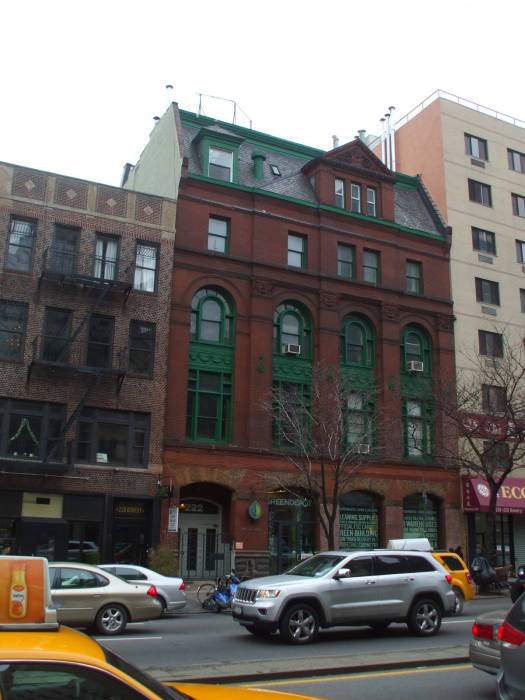



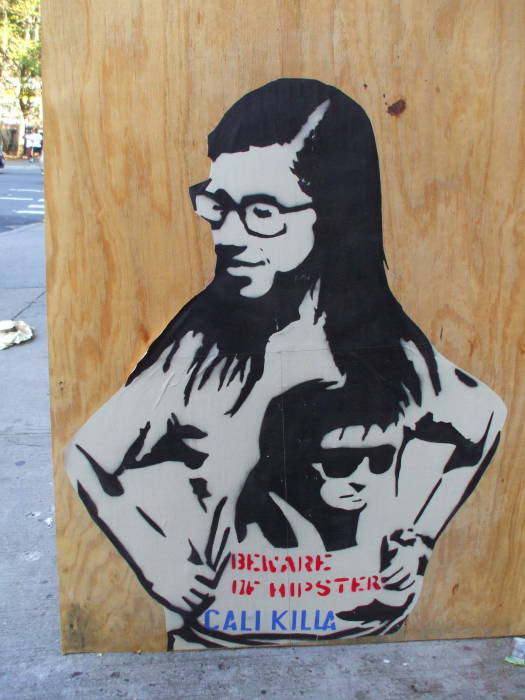
Who are the Hipsters of the Lower East Side?
The term hipster has its origins in the world of jazz in the 1940s, when it referred to middle-class white youths who wanted to emulate the lifestyle of the jazz musicians they followed, almost all of them black.
Norman Mailer described the hipster of the 1920s through the 1940s in his 1957 essay The White Negro, which was published in Irving Howe's journal Dissent in 1957. He described this character as a form of psychopath disillusioned by the violence of the two world wars, nihilistically seeking meaning in life through instant gratification. The hipster, according to Mailer, rejects the conformism of industrialized society in order to reject the systematic violence of wars brought about by that society. It's a form of existentialism brought about by the two world wars followed by the Cold War and risk of immediate nuclear war with no warning.
The hipster's language is a peculiar form of argot or cant, adopted partly from the African-American vernacular and stripped of most of its semantic stability. A single word can have arbitrarily many meanings depending what the hipster wants to think it means in that specific context.
In an article about Norman Mailer in the October 21, 2013 New Yorker we learn:
The "white Negro", also known as "the hipster", is a white man who has "absorbed the existentialist synapses of the Negro." He lives by his instincts—not, like his black counterpart, under the threat of the lawman or the lynch mob but in the shadow of the concentration camp and the atomic bomb. Mailer proposed that two teen-agers who beat to death the owner of a candy store are living existentially, since their act put them into a dangerous relation to the law.
Although Howe later regretted not questioning the passage about the candy-store owner, the editorial board at Dissent accepted Mailer's essay without debate. Its argument was familiar to the kind of intellectual who wrote for journals like Dissent in the nineteen-fifties. It cobbled together ideas associated with texts that were squarely inside the mid-century canon of European modernism—Kierkegaard, Dostoyevsky, Nietzsche, Lawrence, Gide, Camus—along with notions about race that belonged to the white person's cult of jazz.
Amazon
ASIN: B0007FAGPW
Amazon
ASIN: 1742377858
Moving forward to the 1990s and beyond, Matt Granfield wrote in 2011 in his book HipsterMattic that:
Retro was cool, the environment was precious and old was the new "new". Kids wanted to wear Sylvia Plath's cardigans and Buddy Holly's glasses — they reveled in the irony of making something so nerdy so cool. They wanted to live sustainably and eat organic gluten-free grains. Above all, they wanted to be recognised for being different — to diverge from the mainstream and carve a cultural niche all for themselves. For this new generation, style wasn't something you could buy in a department store, it became something you found in a thrift shop, or, ideally, made yourself. The way to be cool wasn't to look like a television star: it was to look like as though you'd never seen television."
One summary was that the movement has not produced great literature, but it has made good use of fonts.
Another view is that hipsterism leads to hypocrisy. Hipsters insist that they avoid labels and being labeled, while at the same time being highly selective and labeling their own clique. They conform in their non-conformity, dressing and acting the same while maintaining a distinctive and carefully created sloppy vintage look.
Don't buy corporate! Unless it's Urban Outfitters.
Distinctive components of the style include ironically outdated everything: logo T-shirts, flannel, clunky eyeglass frames, and meshback trucker hats. And for the structures, stenciled graffiti like the one of the hipster girl ironically wearing unstylish glasses and a stencil artwork T-shirt which in turn shows someone in unstylish glasses.
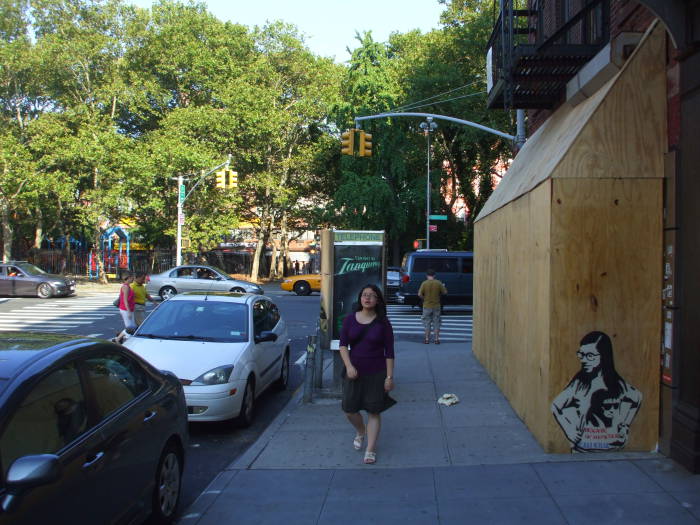
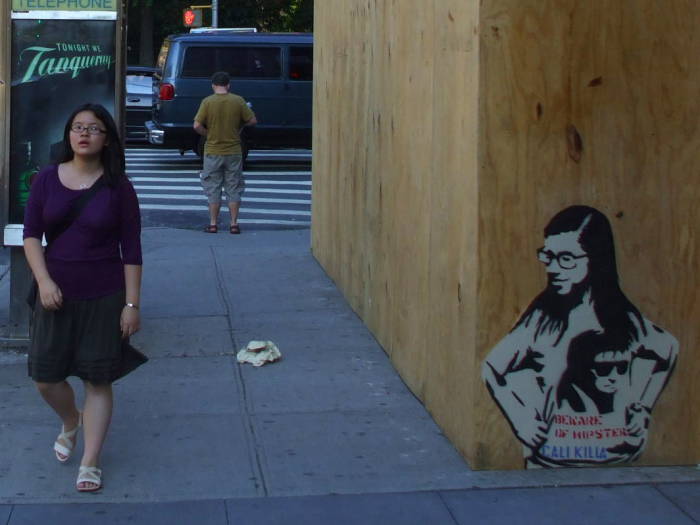
Zooming in closer, this gets a little weird. Is that the stencil model walking past the stencil?
The entire area inland from the East River, from Canal Street up to 14th Street, as far west as Broadway, was once called the Lower East Side. More place names have been coined. Around 1960, the area north of Houston and from First Avenue west became known as the East Village, while from there to the East River along Avenues A, B, C and D became Alphabet City.
The area known called the East Village began gentrifying rapidly, and the process has been described as yuppies moving into the East Village and pushing the hipsters south of Houston. Now the Lower East Side is gentrifying at least as rapidly, with many art galleries and upscale shops.


Chrystie Street
We are about to cross Chrystie Street. It runs north from Canal Street to Houston. At Houston it continues north, now named Second Avenue, all the way to 128th Street in east Harlem.
We can cross Chrystie on foot, although cars cannot travel between Chrystie and Forsyth Streets because Sara Delano Roosevelt Park runs north to south between Houston and Canal.
In the block north of here between Rivington and Stanton is the M'Finda Kalunga Garden. A plaque there explains that the garden commemorates an African-American burying ground that was located there.
Forsyth Street
We have passed through the park and are about to cross Forsyth Street, past the Indochina Sino-American Community Center or the Hội Kính Lão Việt Miên Lāo.
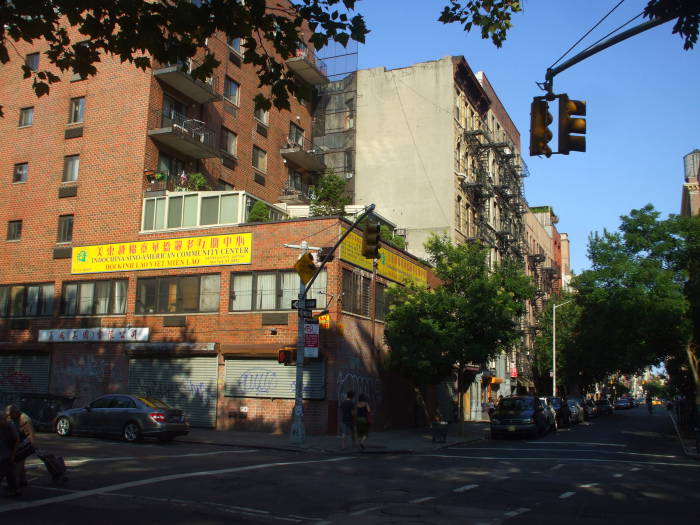
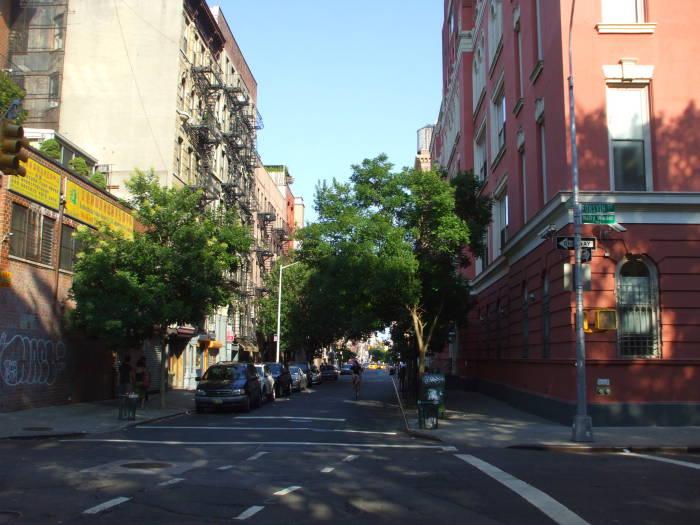
We will continue straight ahead on Rivington Street. If we were to turn right on Forsyth and walk south a few blocks, we would come to a number of Chinatown bus companies provide frequent and cheap transport to cities along the east coast.
We are approaching a synagogue between Forsyth and Allen. This area was largely Jewish in the early 20th Century. Much of the local population had immigrated recently from eastern Europe, Greece, Turkey and Syria.
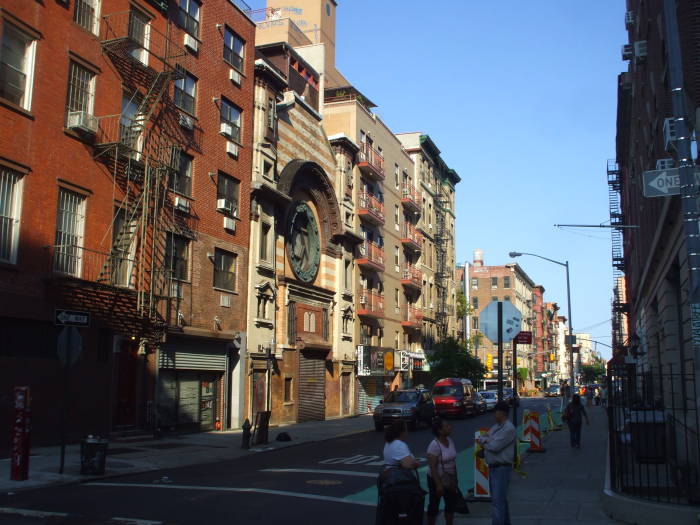
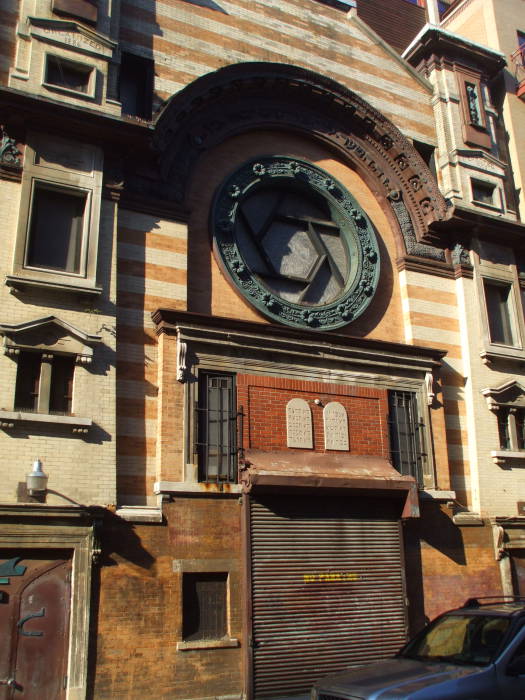
The area was filled with brass and copper artisans, with the metal objects fabricated in basement workshops and sold in street level shops. Most of these shops disappeared after the 1940s, with only a few lasting as late as the 1970s.
Allen Street
We are about to cross Allen Street. It is now a broad thoroughfare with a wide pedestrian and bicycle median down its center.
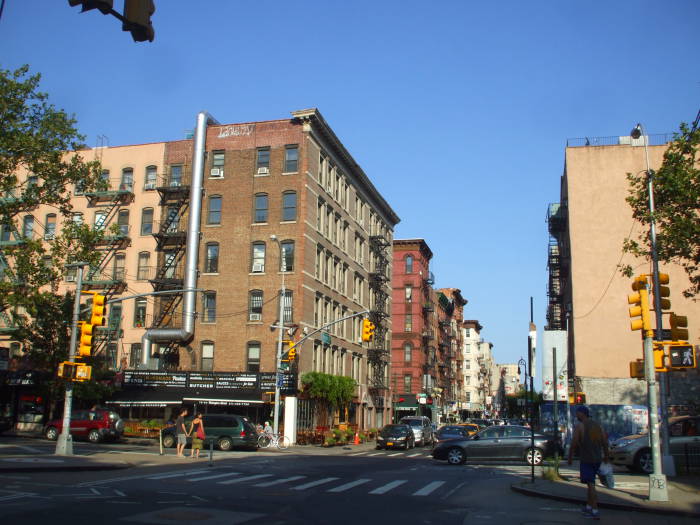
Turning to look back, we see one of the older buildings along the west side of Allen. Buildings along the east side of Allen were demolished in the early 1930s.
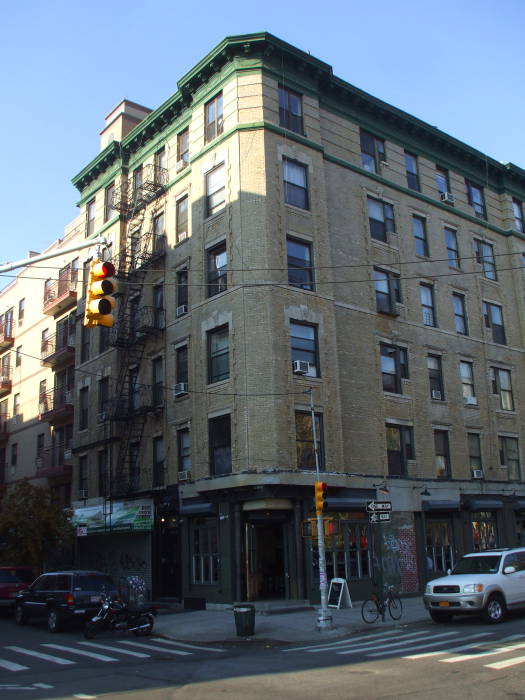
The elevated tracks of the IRT Second Avenue Line were built in 1878. The elevated track covered most of Allen Street and blocked almost all the light on what then was a narrow street. The widening of Allen in the early 1930s brought some light to the street. The Second Avenue El was torn down in 1942.
We're looking north up the southbound side of Allen. Notice the green painted dedicated bicycle lanes on either side of the central pedestrian-only median. A row of flexible reflective posts keeps motor traffic out of the bicycle lanes.
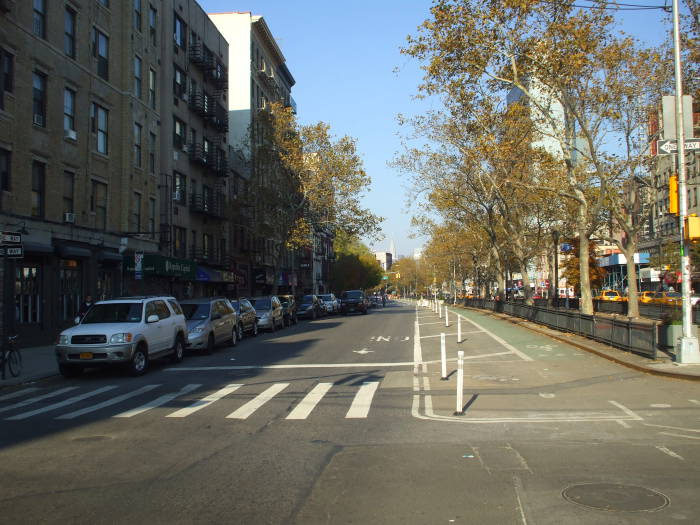

We are crossing the northbound side of Allen. To our right in this view is Rivington, continuing to the east.
Café menus along here tend toward lots of use of the word "artisanal" Below, we are continuing from Allen toward Orchard.
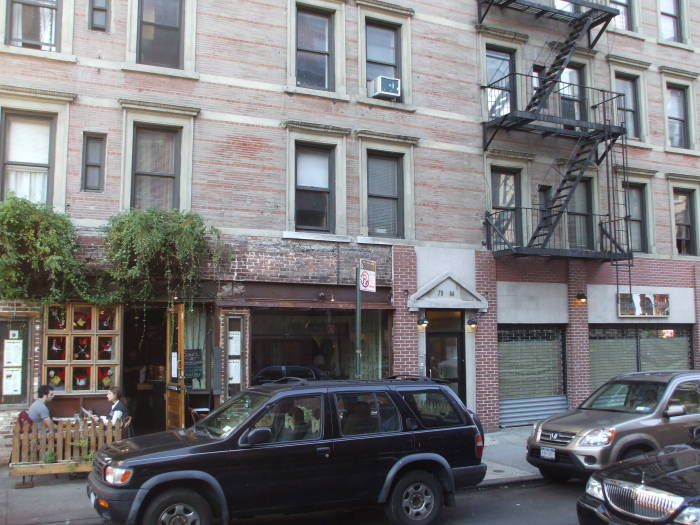
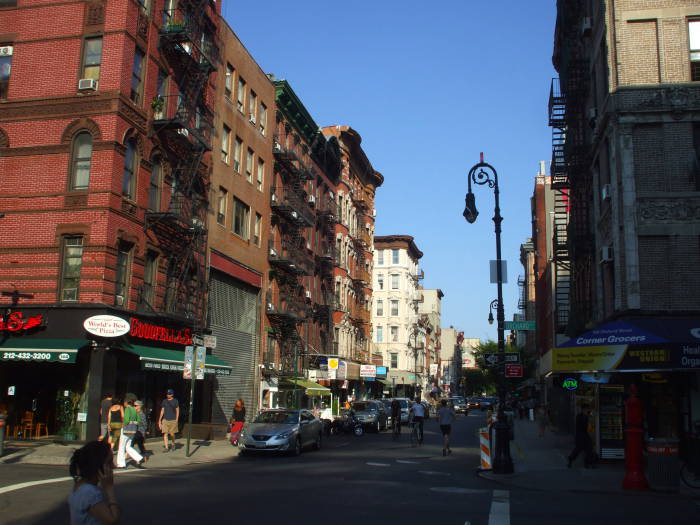
Orchard Street
Above, we are approaching Orchard Street. Orchard Street is closed to traffic and used as a pedestrian mall every Sunday from 6 AM until 6 PM.
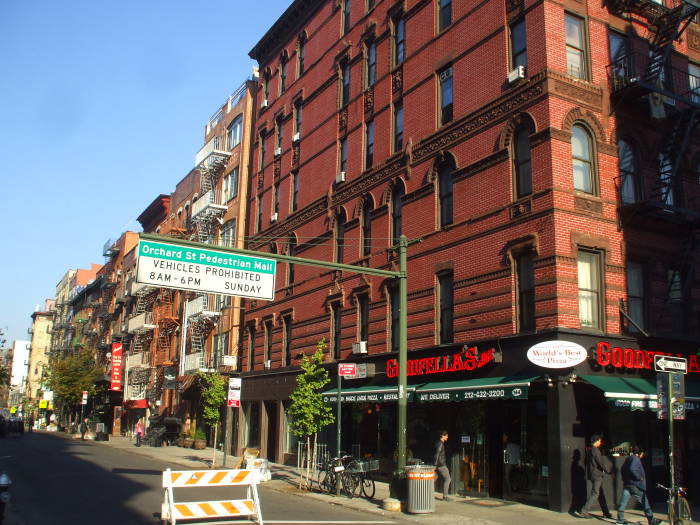
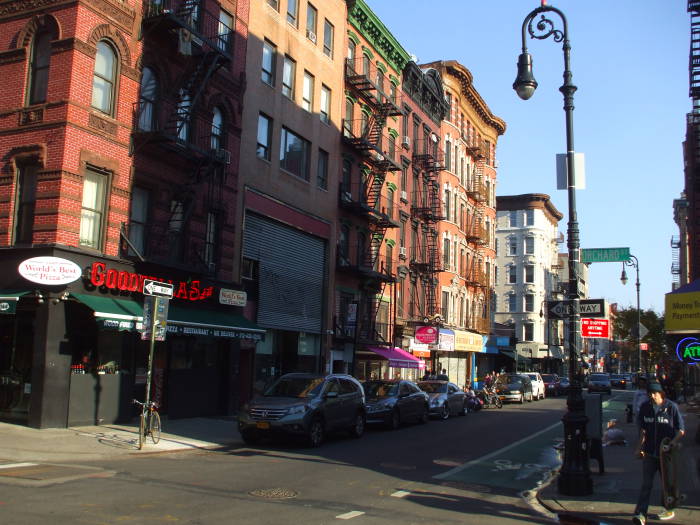
We will cross Orchard and continue east on Rivington Street.
Here we are passing the former site of the First Roumanian-American Congregation, also called Congregation Shaarey Shomayim (Hebrew for "Gates of Heaven") or the Roumanishe Shul (Yiddish for "Romanian synagogue). The building at 89-93 Rivington Street had been built as a church around 1860, modified into a syngogue, then back into a church again. It was purchased by the First Roumanian-American congregation in 1902, transformed back into a synagogue and extensively remodeled.
Travel inRomania
The synagogue flourished as 2 million Jews immigrated from Europe to the U.S. between 1881 and 1914, with about 75% of them settling in New York, many of those in the Lower East Side. Over 75,000 of them were from Romania, where they had faced antisemitic laws and violence. About 30% of the Jews in Romania emigrated to the U.S. during this period. This area was densely populated, housing 1,500 to 1,800 people per block.
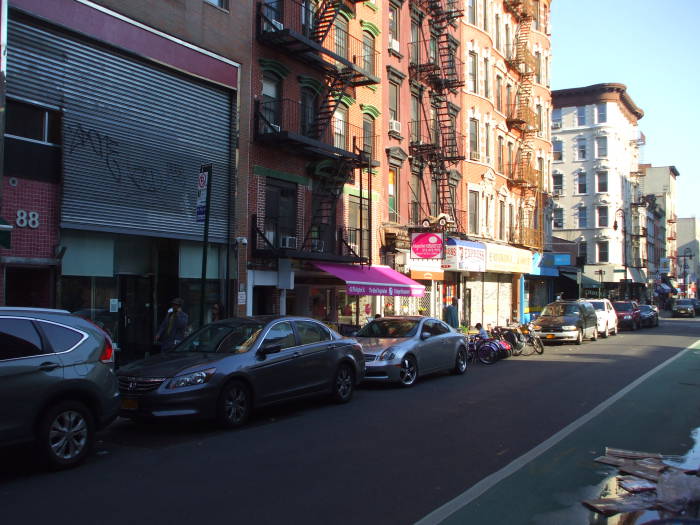
Amazon
ASIN: 0253337887
Amazon
ASIN: 0486409015
The synagogue seated up to 1,800 people in a space with a high ceiling and good acoustics. It filled its lot, 70 feet wide and 100 feet deep. Several Hollywood figures were members. Red Buttons sang in the choir, Edward G Robinson, born in Bucharest, had his Bar Mitzvah here, and George Burns was a member.
The Jewish population of the area flourished and moved out to northern Manhattan, Brooklyn and the Bronx, and the congregation shrank. In the early 1990s they could still assemble the minyan, the required quorum of ten men for morning and evening prayers. But by 1996 the membership had dropped to about two dozen.
The building deteriorated. Its roof caved in during January, 2006. The sanctuary had not been regularly used for over ten years. The building was demolished in March, 2006.
Moby and his girlfriend at the time founded the TeaNY vegan restaurant between Orchard and Ludlow, across from the former site of the synagogue. It offers a variety of teas and vegan dishes.
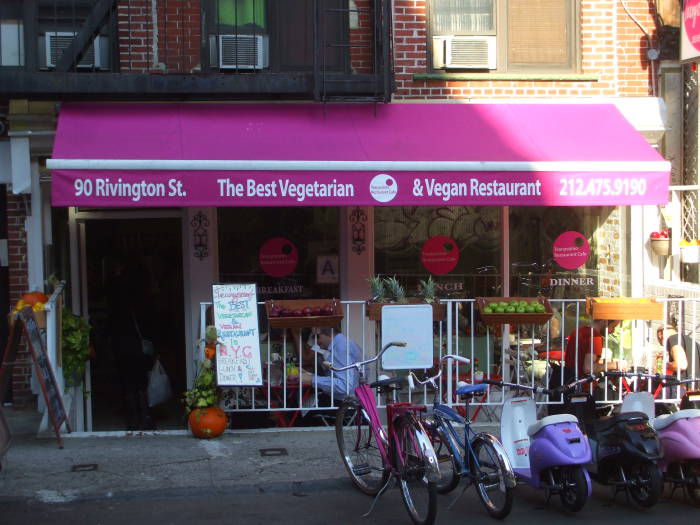

Ludlow Street
We continue east on Rivington Street toward Ludlow Street. Once we reach Ludlow we will turn to look south.

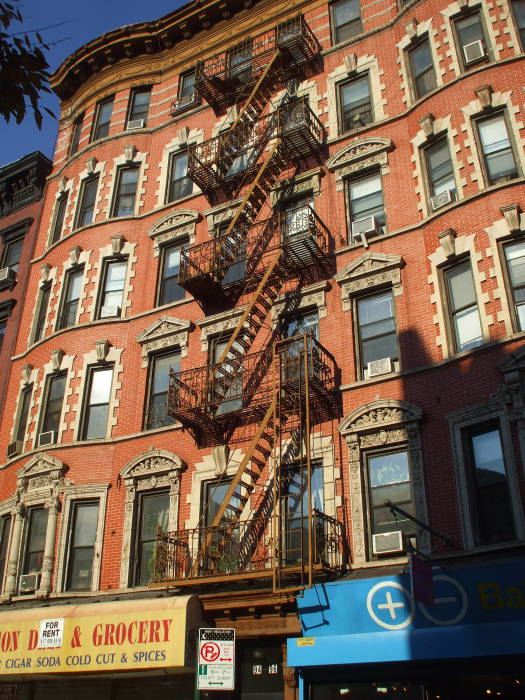
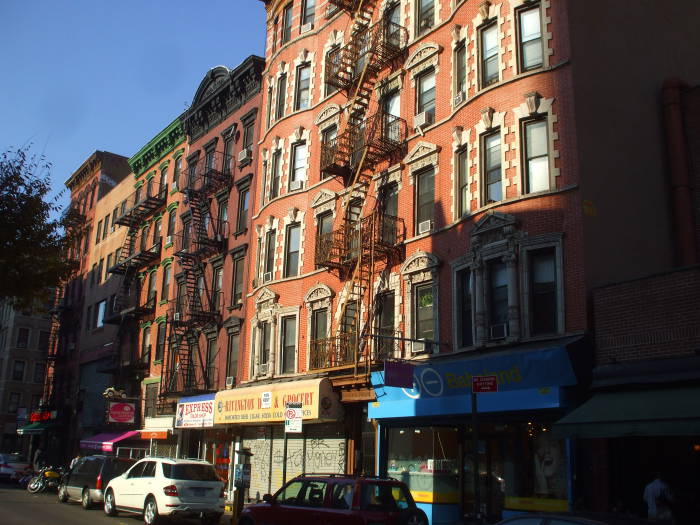
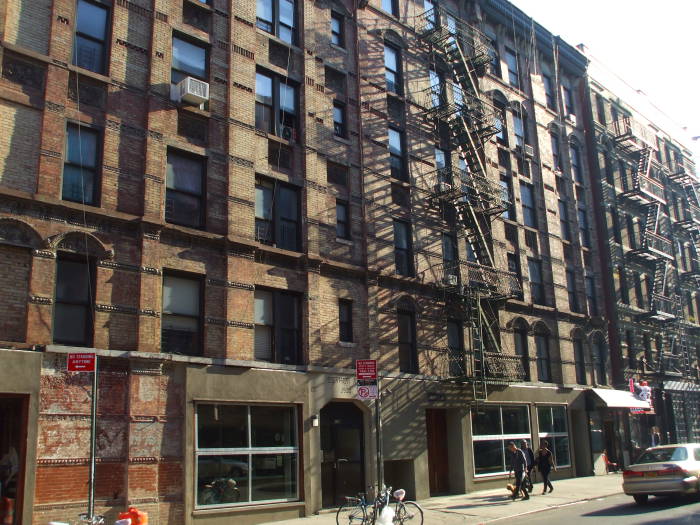

From the 1960s through today there has been a very active music scene in this area, especially along Ludlow. There are several bars and nightclubs, including the Bulgarian Mehanata less than a block south of Rivington.
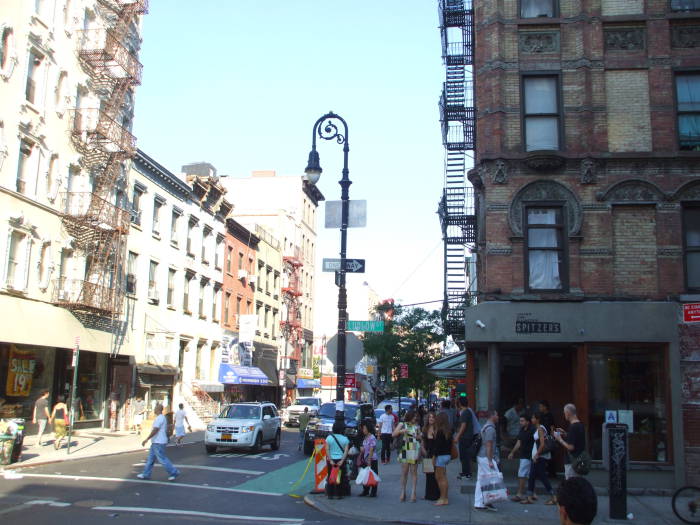
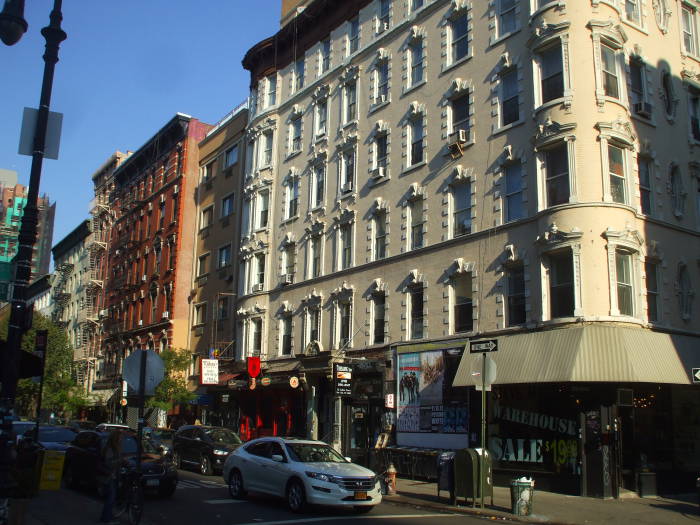
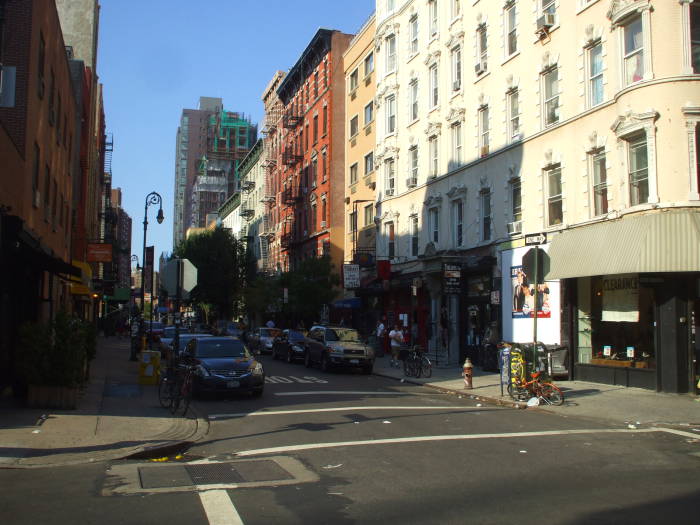
Above, we are looking north on Ludlow.
Below, we continue east on Rivington Street from Ludlow toward Essex.
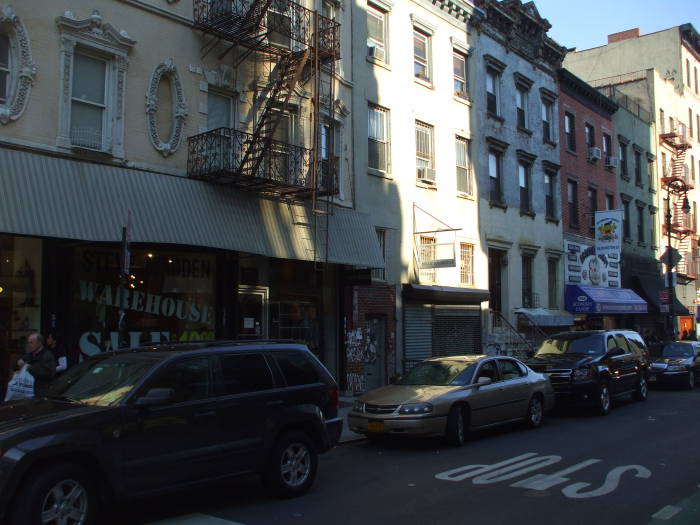
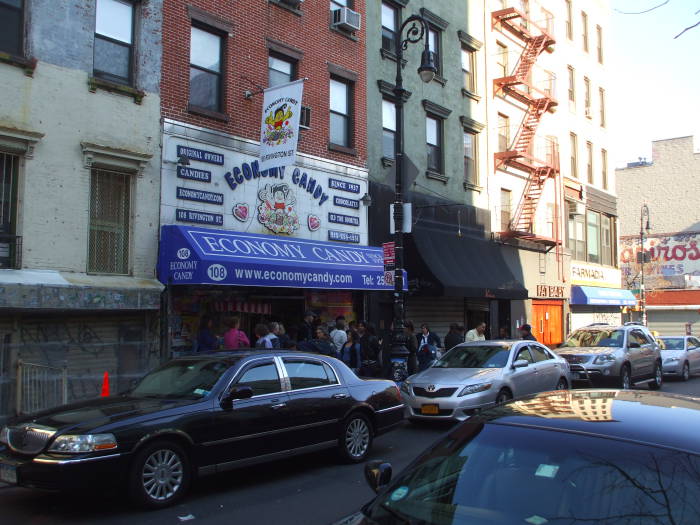
Essex Street
We are getting close to Essex Street.
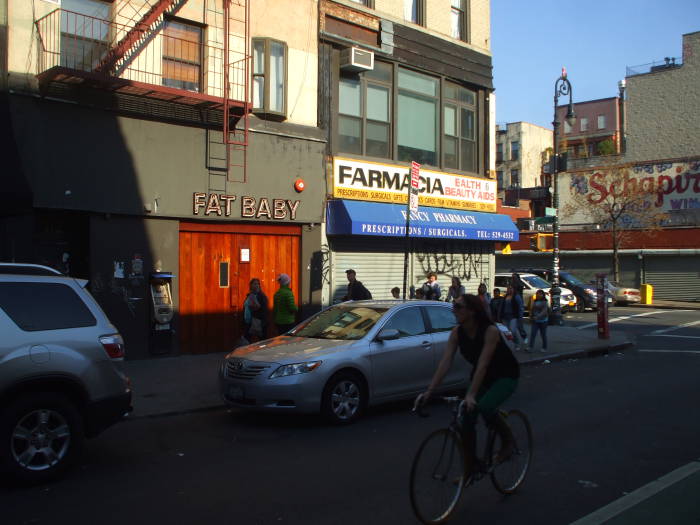
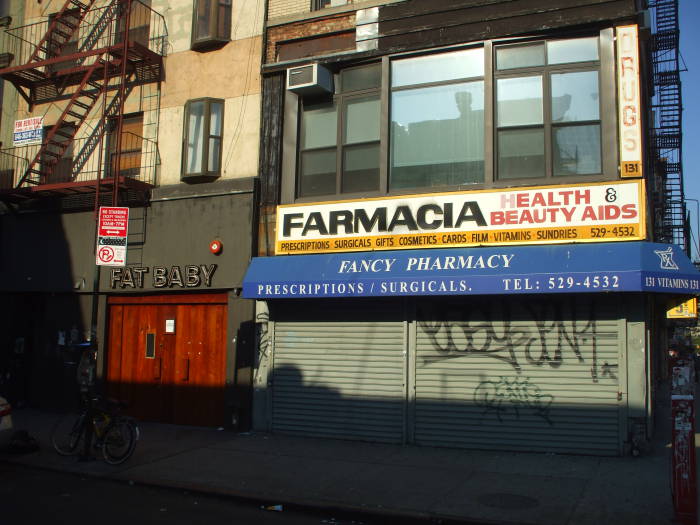
We have reached Essex Street. It starts at the East River, almost underneath the Manhattan Bridge. In that area it is called Rutgers Street. It runs north to Canal, where its name changes to Essex. North of here, at Houston, it becomes Avenue A and continues north to end at 14th Street.
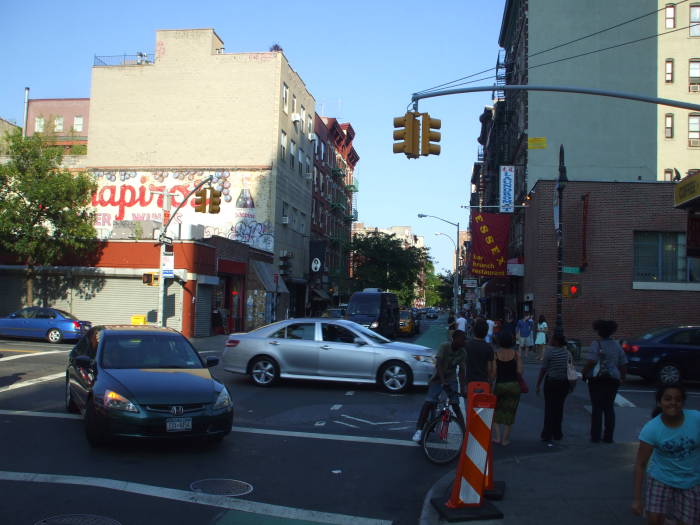

Looking to the southeast from the intersection of Rivington and Essex, we see one of the new buildings on Delancey Street.
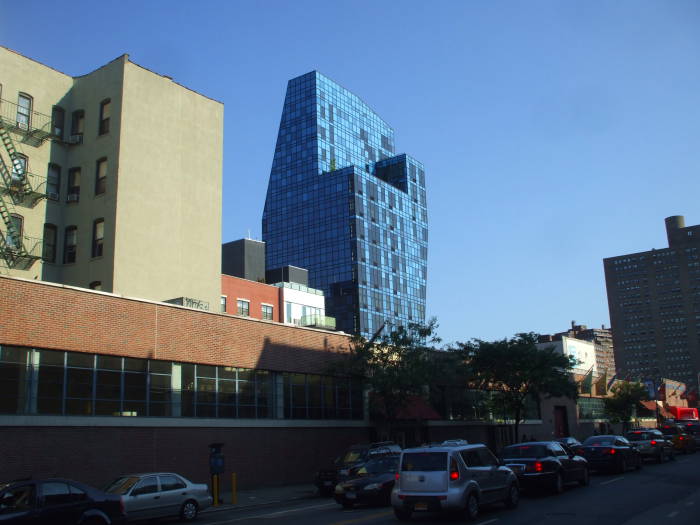

Amazon
ASIN: B001GM28HO
Amazon
ASIN: B004K4AVAG
We can stop at Johnson's Bar and talk skateboarding with the local punks.
Lady Gaga had an apartment on Stanton Street and references Rivington in a number of her songs, including Heavy Metal Lover.
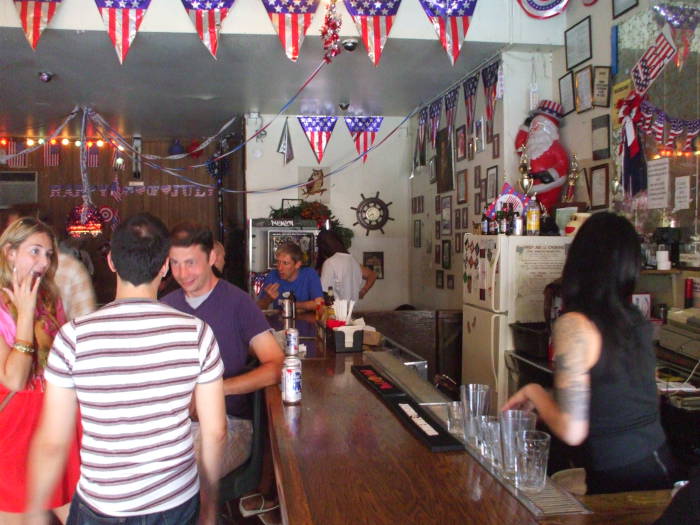
As for the original shout-out to Rivington, the street was named for the English-born journalist James Rivington. He sailed to America in 1760, and the following year he opened a printing shop at the riverside end of Wall Street.
He began publishing his newspaper The New York Gazatteer or the Connecticut, New Jersey, Hudson's River, and Quebec Weekly Advertiser in 1773. He started out politically impartial, but within a year he was so strongly Loyalist that the American patriots hanged him in effigy and criticized him at length.
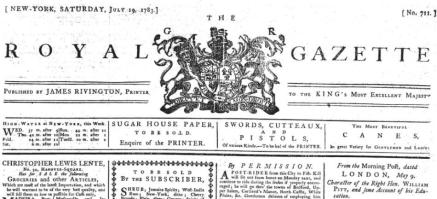
Immediately after the beginning of hostilities in May, 1775, the Sons of Liberty group, which had been started by Samuel Adams, mobbed Rivington's home and press office. Rivington fled to the harbor and the British warship Kingfisher. A number of radicals broke into his printing office to destroy his press and seize the lead type for recasting into bullets. Another mob burned down his house that same day. Rivington and his family sailed for New York.
By 1777 the British were securely in control of an occupied New York. Rivington returned with a new press and set of type, and resumed publishing his paper under the new name of Rivington's New York Loyal Gazette. In December of 1777 he change its name to The Royal Gazette, with the banner Published by JAMES RIVINGTON, Printer to the KING's Most Excellent Majesty.
Despite his almost flamboyant support of the British side, to the point that even the British criticized his paper for its disregard for the truth, after his return he was a spy for the American colonial side.
He had become a member of the Culper Spy Ring, organized in the summer of 1778 and quite active through 1781. He wrote his messages on thin paper bound into the covers of books and conveyed to the American camps. George Washington himself did not know the identities of all his operatives, and the general public did not know about the existence of the spy ring until the 1930s, when a historian traced a connection between personal letters and messages to Washington's forces.
Back onto our route to the east. We're outside Johnson's (the brown awning at right) looking down Rivington toward Norfolk.
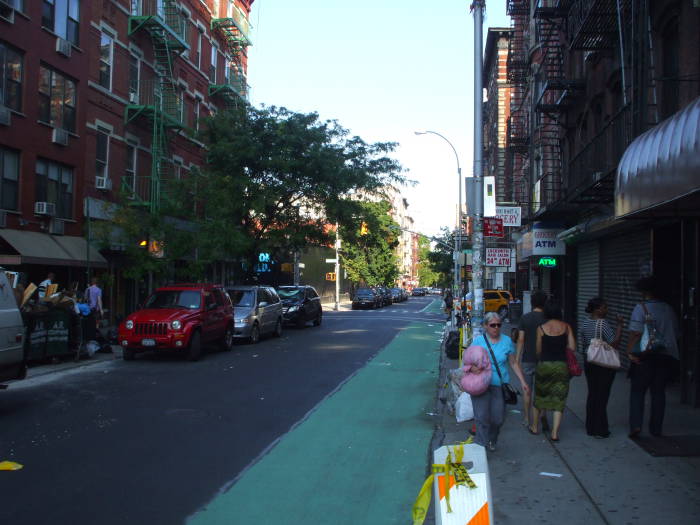
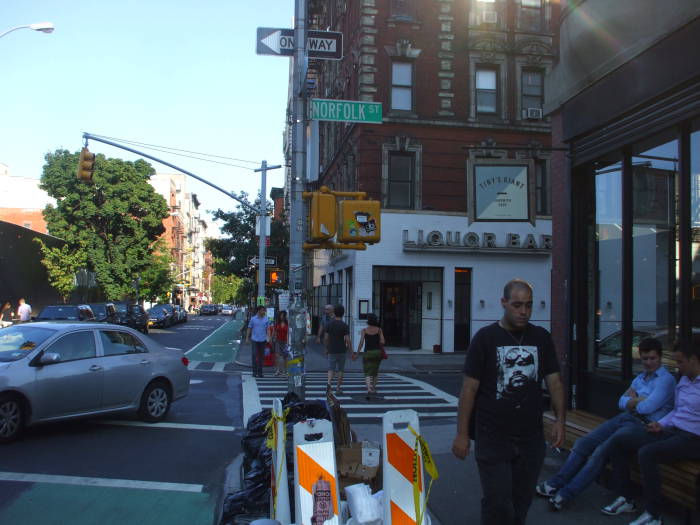
Norfolk Street and Suffolk Street
We cross Norfolk Street next.
Suffolk Street is the next block east of Norfolk. That's a little confusing, you expect Norfolk to be north and Suffolk south, not west and east respectively.
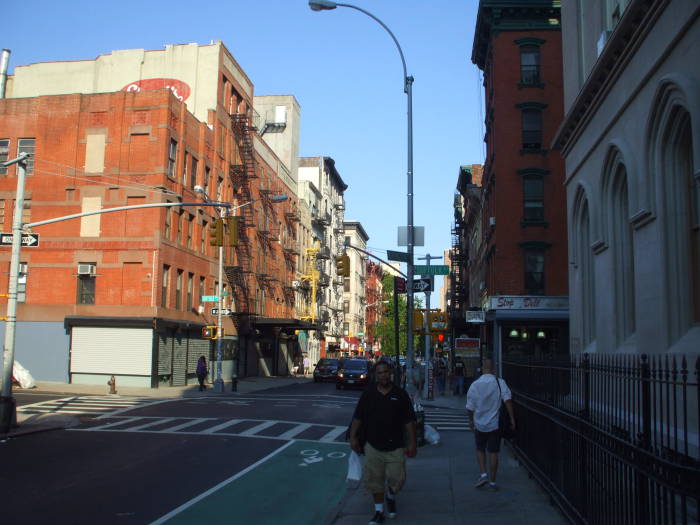
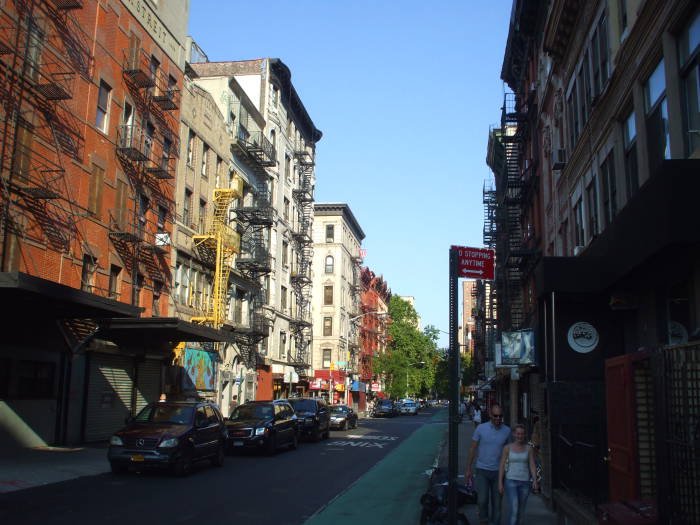
Clinton Street
We approach and cross Clinton Street above and at left.
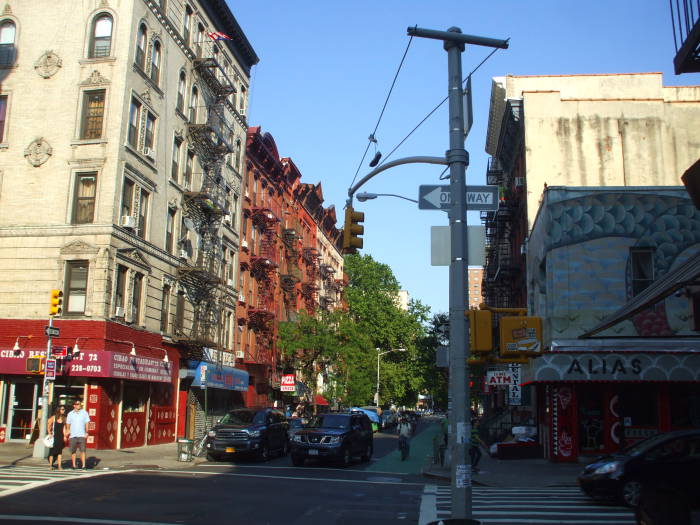
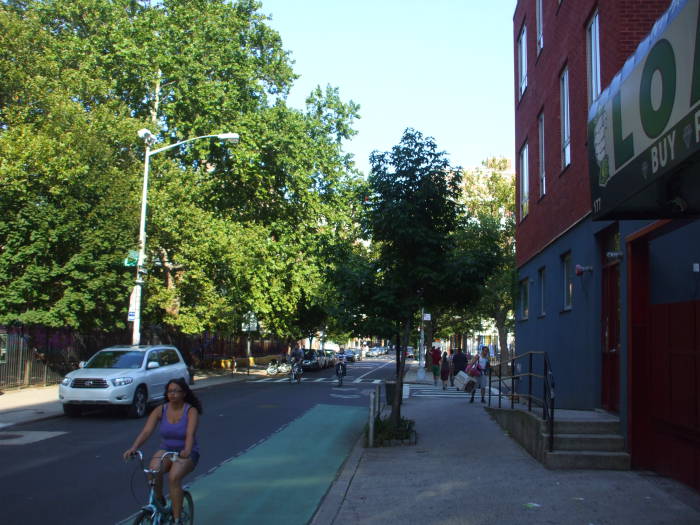
Attorney Street and Ridge Street
Attorney Street is short, ending at Rivington and not continuing to the north.
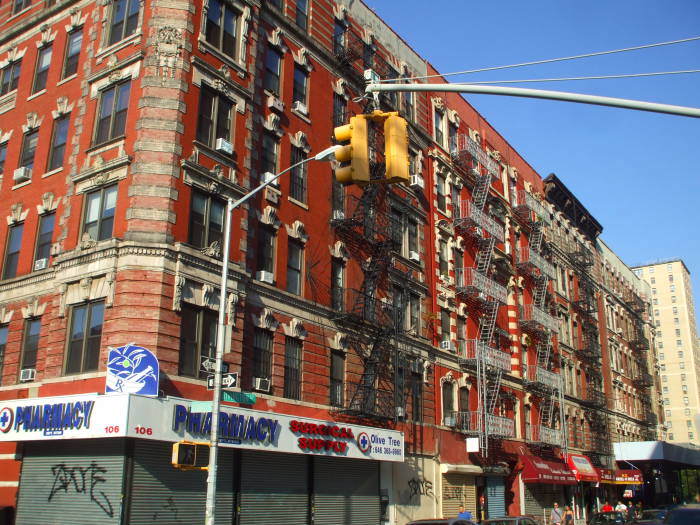
We cross Ridge Street and continue toward Pitt Street, where we reach the New York City Housing Authority's Samuel Gompers Houses, the light yellow building visible in the picture above.
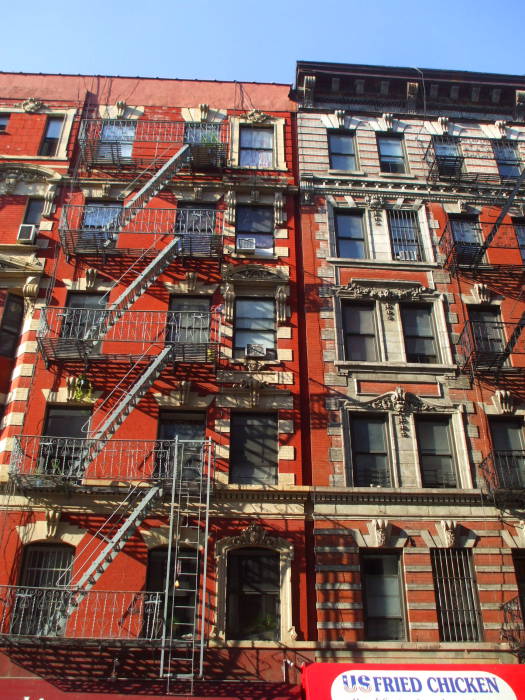
Manhattanhenge
Returning toward the west later in the day, we are outside Johnson's at sunset. We are looking east in the first picture below, and looking west in the second.
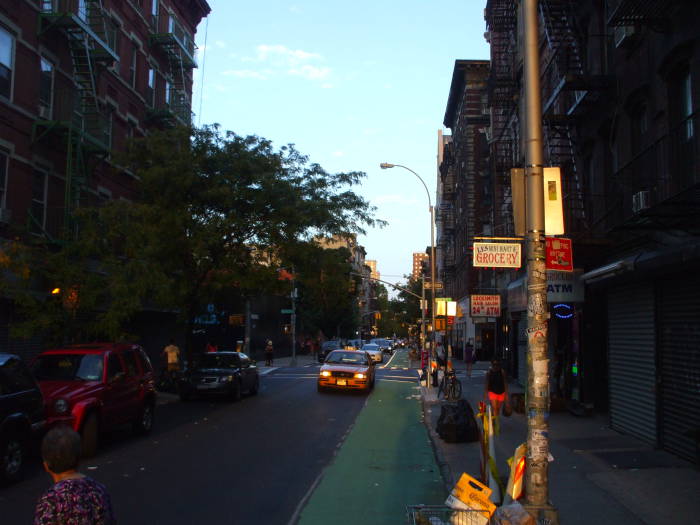
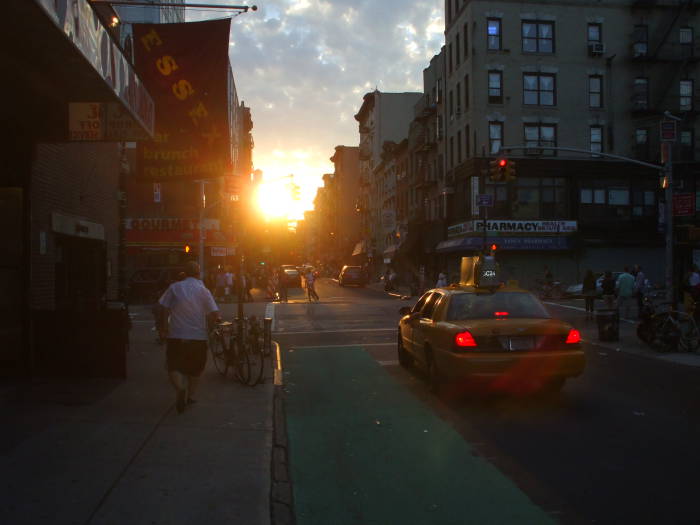
Returning to the west on Rivington, we are walking into the setting sun. Manhattanhenge is the term given to the times when the sunrise and sunset align with the Manhattan street grid.
The main grid of streets with its 29° offset from true east-west exhibits this effect four times a year, with sunrise aligned to the street grid around December 5th and January 8th, around the winter solstice, and sunset aligned around May 28th and July 12th, around the summer solstice.

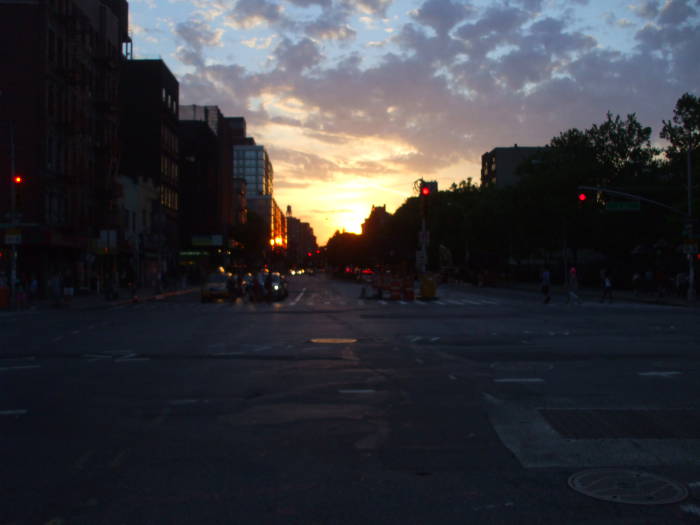
With the east-west streets in the Lower East Side about 7° closer to true east-west, in this area you would experience the four Manhattanhenge events a little closer to the solstices. These pictures were taken on July 7th, which appears to be very close to aligning the sunset with these streets. All of these pictures have been taken on Rivington, with the exception of the one at right, on Houston.
